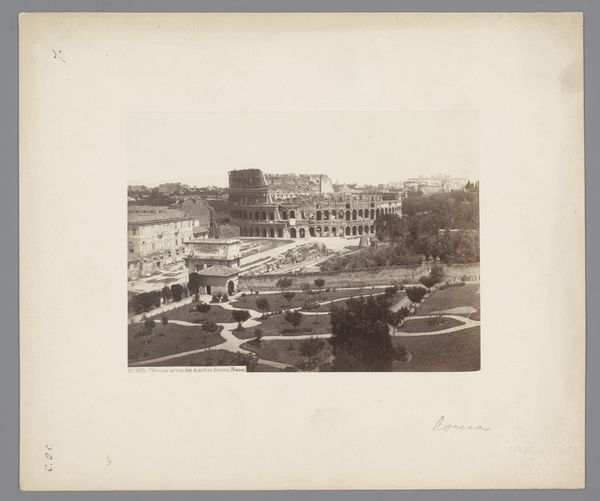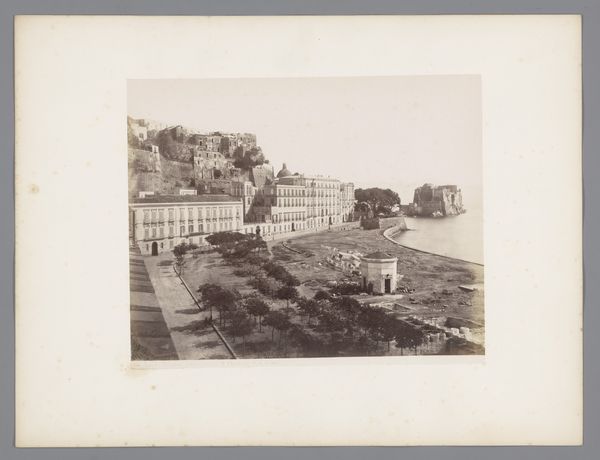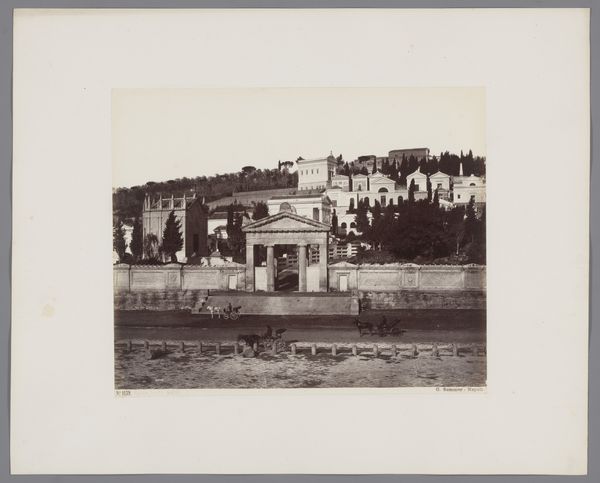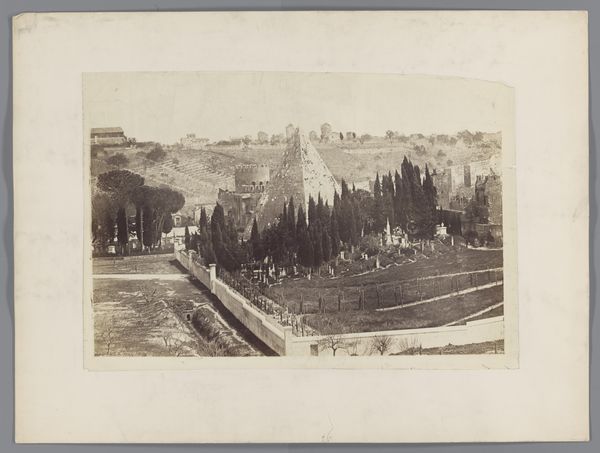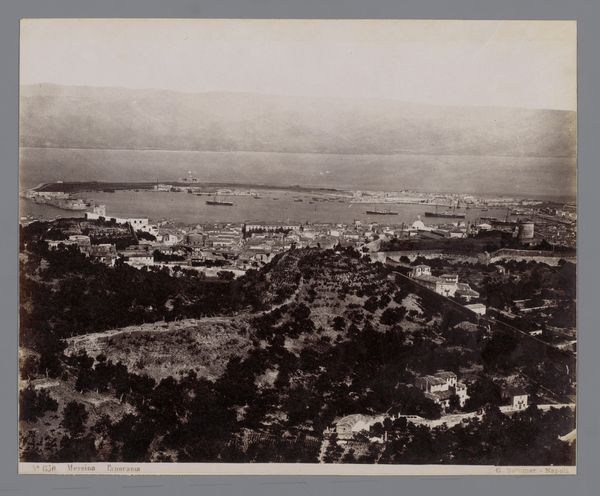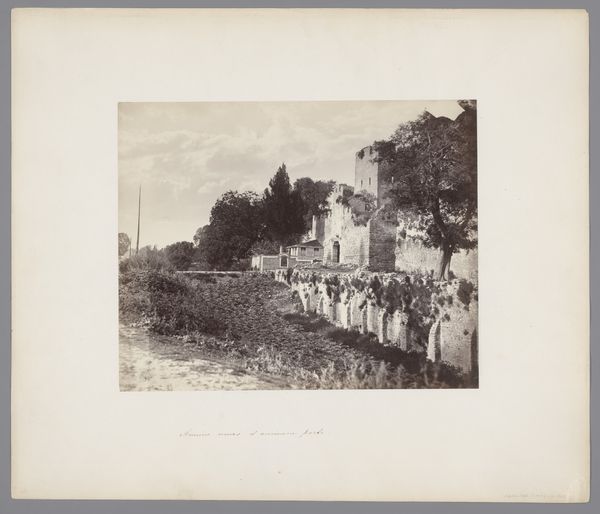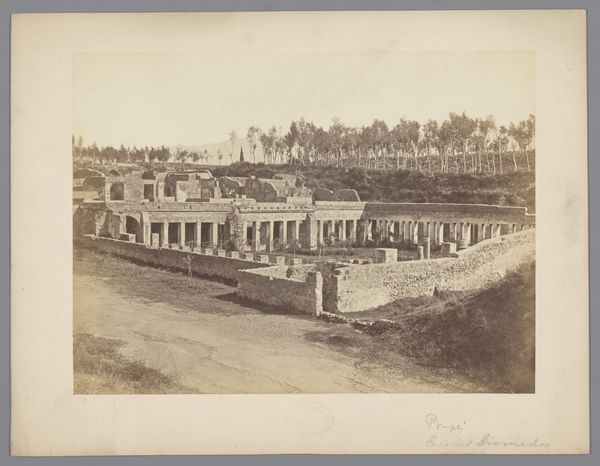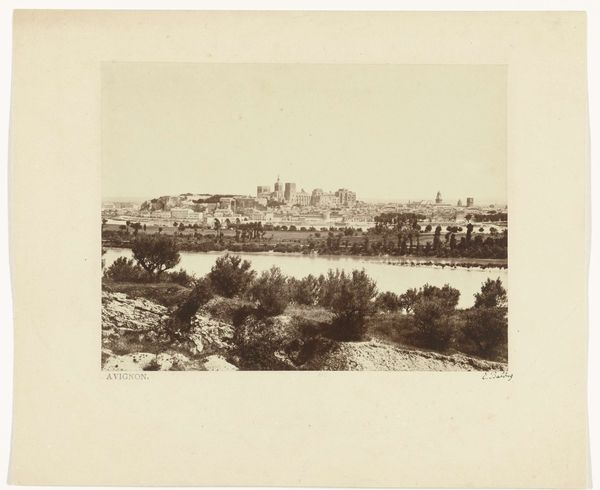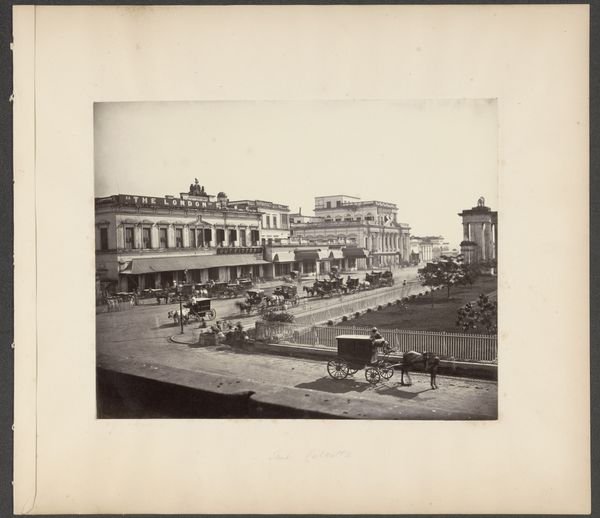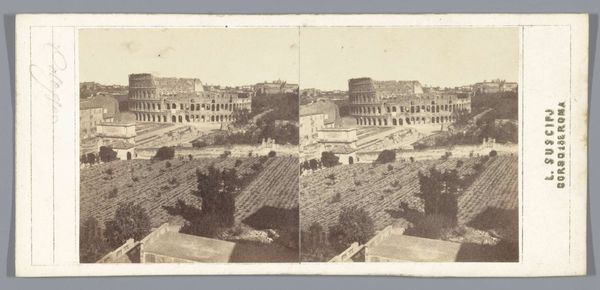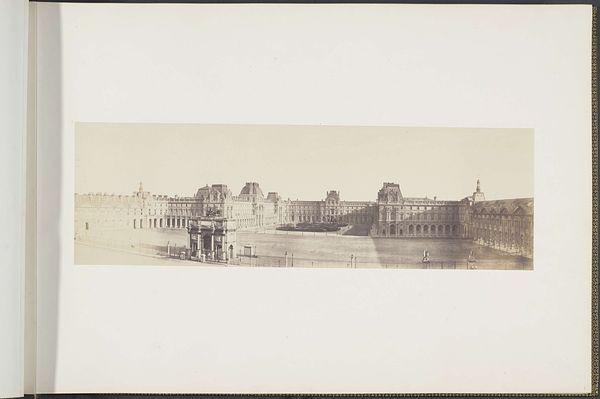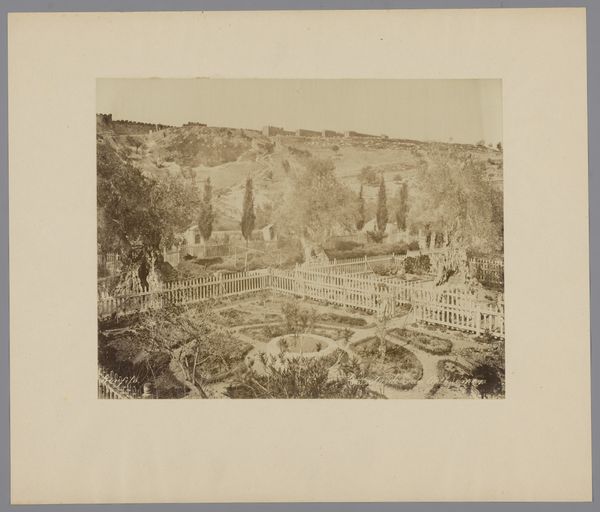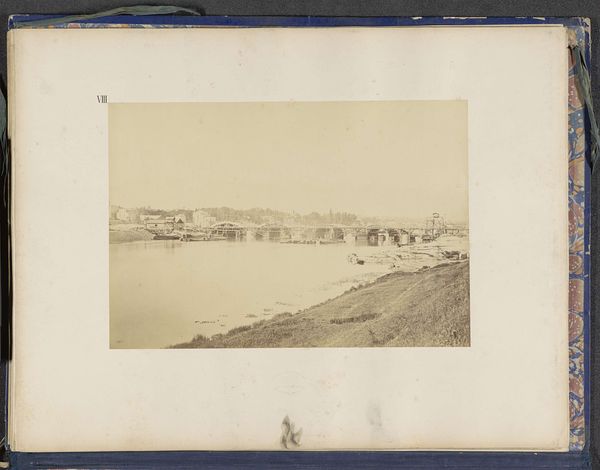
print, photography, albumen-print
# print
#
greek-and-roman-art
#
landscape
#
photography
#
cityscape
#
albumen-print
#
realism
Dimensions: height 251 mm, width 378 mm
Copyright: Rijks Museum: Open Domain
Editor: This is "Gezicht op de Palatijn te Rome," a photograph, specifically an albumen print, by Gustave Eugène Chauffourier, dating from around 1875 to 1900. The sepia tones and the subject matter lend it such an antiquated feel; it really makes you wonder about the role of photography in shaping perceptions of history. How do you interpret this work? Curator: It's fascinating how photography like this both documents and shapes our understanding of Roman antiquity. This image presents the Palatine Hill not just as a ruin, but as a cultivated landscape, almost a romantic garden. Consider the role that tourism played in this era. The Palatine became a destination, a stage for experiencing history. The choice of albumen print, with its inherent romantic aesthetic, was intentional in constructing that narrative. Editor: So you're saying that this image isn't just a neutral record but a carefully crafted piece of visual rhetoric? Curator: Precisely. Look at how the photographer positions the ruins in relation to the contemporary structures. There’s a subtle negotiation between past and present, suggesting a continuity but also the inevitable march of time and progress. What is not captured here also shapes this photo: poverty, marginalized histories, the everyday chaos of Rome itself. Photography always frames reality, consciously or not. Editor: That makes me consider who this image was for. Was it intended for scholarly use, or more for popular consumption? Curator: Most likely for tourists or those who dreamed of traveling. The marketing of Rome as a classical destination fueled a desire for these kinds of images. Think about the implications of making this history available as a commodity. How does access and circulation affect how that history is valued and understood? Editor: It's made me think a lot about how much context is shaping how the photo even exists. Curator: Exactly, and it’s a great starting point to see how history and cultural forces are not passively behind the creation of the art, but instead actively part of it.
Comments
No comments
Be the first to comment and join the conversation on the ultimate creative platform.
